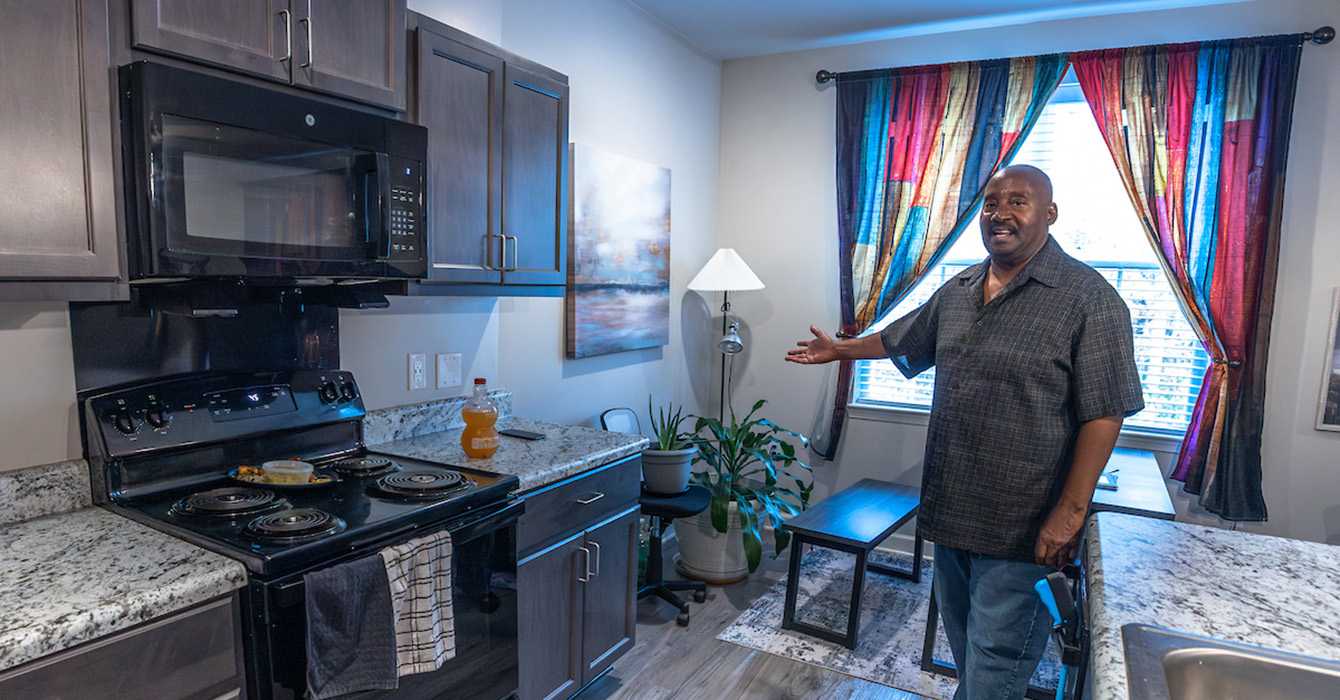Editor’s note: As the Christian landscape changes, leaders must ask and answer a new question: What’s the future of denominations? This interview is part of an occasional series that offers insight on this vital issue.
 When Richard (Rick) Foss was presiding bishop of the Eastern North Dakota Synod of the Evangelical Lutheran Church in America, he grew increasingly concerned about the impact that student debt was having on his young pastors and their ministries.
When Richard (Rick) Foss was presiding bishop of the Eastern North Dakota Synod of the Evangelical Lutheran Church in America, he grew increasingly concerned about the impact that student debt was having on his young pastors and their ministries.
But rather than just worry about it, Foss led the synod to build an endowment that helps seminarians reduce the amount of debt they carry into their first called ministry. Now, for a project with Lilly Endowment Inc., Foss is helping to create similar programs to bolster the economic health of clergy families across denominations.
After extensive service as an ELCA pastor, Foss was called as bishop to the Eastern North Dakota Synod from 1992 to 2008. After that, he became director of the Contextual Leadership Initiative at Luther Seminary. Foss has master’s degrees in divinity and theology from Luther Seminary and Luther Northwestern Seminary respectively.
Foss spoke with Faith & Leadership about efforts to illuminate and alleviate the financial strain of ministry. The following is an edited transcript.
Q: While you were bishop in North Dakota, you became interested in financial difficulties faced by young pastors.
From ’92 to 2008 I led 250 congregations, 100,000 members and 300 pastors. Our young pastors had a lot of debt; they were accruing debt while in seminary. My first thought was why didn’t they live more frugally and get through without debt? My wife and I got married in seminary, and we lived pretty frugally and came out OK.
Then I explored a little and realized that somewhere in the intervening years the whole church dropped the ball with funding for theological education. There were fewer dollars relative to the cost. And then the cost of everything from tuition to health care had risen greatly. I realized that if a student in 1999, when this was taking place, were to do the same thing that my wife, Nancy, and I did in 1970, they would come out with a lot of debt.
The average student-loan debt for our new pastors at that point was over $30,000, and that, of course, doesn’t touch consumer debt, credit card debt and other things that are more hidden. I knew what we were paying those pastors. I said, “This can’t work.”
Q: What are some ways that amount of debt manifests itself in a young pastor’s life?
The first thing that would happen would be stress in the marriage because of the shortfall. Second thing is probably resentment of the church and the institution, the seminary. And now you can’t possibly lead a stewardship campaign, nor can you feel very healthy and whole. Money becomes a barrier in the ministry. It becomes an issue.
Now everything changes -- how the pastor feels about himself, about the congregation, about church. Money is a spiritual issue. It feels like the pastor is trapped. Silently you look for a better-paying job. Even if you want to serve in a small congregation, you don’t feel like you can. And in the end, the ministry is hurt.
The way I would talk about it in North Dakota was, “We’ve got great pastors, but if they can’t make it work, the ones who would like to stay can’t stay.” People didn’t know that pastors were coming out with that kind of debt; they assumed that seminary education was sort of magically funded, because it used to be.
At this point, I said, “If we can put an endowment together, we can help those that we are sending to seminary to defray this for the future.” So we approved seminary scholarships on a matching basis -- the more they can do, the more we’ll do to help pay down those debts. And we’ll do a pension equity element for those who are low-paid, or help with rural internships.
Q: Could you share some specific stories on how the program has affected ELCA pastors in eastern North Dakota since 2000, the year you began?
A second-career pastor came out, early 40s, had two young children, loved small-town ministry and they loved him, but he had 40-something thousand dollars in student debt, and salaries are modest in those places.
He was going to be 70 before the student loans were paid. He would have already put his children through college and retired before his student loans were paid off. We said, “That’s terrible.” He said, “I’d love to stay here.” We set up the matching [endowment]. Seven years later, that student loan was paid off, instead of 30. And he was delighted. The people were delighted. The family is healthier.
Q: My guess is that these are issues for every size congregation, but is it particularly acute in rural churches?
It’s rural churches, but then there’s a hidden one. The associate pastors in our larger congregations turn out to be in a similar situation. Some of our most grateful pastors were associates in those larger congregations. It was a more pervasive problem than I had imagined.
Q: Why do you think the problem wasn’t more obvious?
Pastors are not going to complain. It’s hard enough for pastors to do any kind of negotiating. You’re supposed to serve these people and help them to give money. Economically, pastoral ministry is a very difficult thing, whether there’s debt in the position or not.
I used to go into church basements with the council and talk about compensation for pastors and say, “Now here’s my only pitch. When you talk about clergy compensation, you go into stewardship mode. And for you, stewardship mode means to get the most pickup for the least money. The pastor shouldn’t try to get as much as he or she can out of you, and you shouldn’t try to lowball them.” That whole negotiation for pastors is difficult. Then you put debt on top of that; a pastor gets under pressure.
My second year of call, the congregation was struggling; they wanted to cut the benevolence (charitable giving). I said, “I’ll make you a deal. Don’t cut the benevolence. Leave it the same, but don’t give me the raise you’re proposing. If you can make it up in future years, great.” In the end, they agreed.
Now, if I had come out with $100,000 in student-loan debt, I don’t think I would have had the guts to do that, certainly not admit it to my wife. And right there begins the compromise in my sense of ministry and integrity.
Q: Laity generally seem pretty clueless about seminary education. Like you said, it magically happens.
That was the biggest shock as I would talk to key lay leaders and laypeople. Those who ended up helping this go said, “Really? They’re coming out with that kind of debt? And that’s because the cost isn’t covered somewhere? What can we do?”
It’s a systemic thing. I believe in theological education as a whole, and I know we’re trying to tend to that better than they were a decade or two ago. But that was one of those things we just didn’t want to look at.
Q: You’ve been a pastor, a bishop, and now you’re at Luther Seminary. What does the problem look like from each of those perspectives?
This decade has not been the greatest decade economically for our society. If a seminary is feeling economic stress, eventually it tends to reach down to the people with the least power, which is the student. Not by design but by default. In a church system, if a congregation is feeling broke, you’re going to try to keep your costs low. Your largest costs are usually your human costs. Then the ministry gets impacted negatively. Emotionally and physically, pastors pay a price. You’re feeling chewed up with this sort of stress, and theologically you’re supposed to not have a problem with it.
Q: What role do seminaries, denominations and congregations have in solving this issue?
Number one, I’m delighted with the progress. In 1999 I couldn’t get a conversation partner, and I couldn’t find them. There was more negative feedback to the conversation than positive. Talk to a seminary president, they’d say, “It’s not my problem.” Bishops would say, “It’s not our problem.” Congregations would say, “It’s not our problem.” Basically, it was nobody’s problem.
We’re an organic whole; if the pastor is this embarrassed person who can’t tithe and feels caught, that’s going to diminish the ministry. And once the congregational ministry isn’t healthy, that’s going to diminish everything else. It’s all interconnected.
It’s been going well. There are folks saying, “How do we do this together?” And then, of course, the student has to be responsible and take control, too. You need to build a system, whether it’s in theological education institutions or ELCA, where you reward the students for doing everything they can to get through this without a major debt. You don’t encourage them, and in fact you tell them they have to owe a lot of money, but that’s short term. That’s hard for a seminary to do. That’s hard for a congregation. It’s hard for everybody in the short term. But together we’ve got to figure it out.
Q: What can you tell us about the Economic Challenges Initiative, the Lilly Endowment pilot project that you’re serving as a consultant?
It involves 16 denominational bodies in Indiana looking at the economic challenges facing clergy families in that state. Was there something that was getting in the way of pastoral excellence in that economic realm? I don’t think we’d ever had that widespread a response. The issues range from debt to health care to retirement. Different denominations have different financial challenges, but there is an amazing commonality underneath it all.
Q: How do you build support among laypeople for these kinds of efforts?
Most active members of congregations have some sense of how much we ask of our pastors. They don’t see everything, because they shouldn’t see everything, but they have a sense of that.
I went to folks who are committed to the church and have deep pockets and said, “Would you help us launch this?” Then we went broadly into the congregation. You buy in at a small level from the whole populace. And then a significant buy-in and leadership from those who had the capacity to do it. We gathered a few people at one of the couples’ places and made some invitations to help launch it. Now as we go along we’ll get some lifetime gifts. Over the past decade -- we started in 2000, and we’ve paid out $830,000 so far to seminarians and pastors.
Q: What changes have they seen in eastern North Dakota?
We had more new seminarians wanting to come to eastern North Dakota than we could take in the last three or four years that I was there. Our numbers were way better than the average.
We did a number of things trying to help young pastors. At one point I looked at 102 first-call seminarians who had come into our synod while I was bishop. As far as I could tell, only one wasn’t still in ministry. If you’re really tending to people as they get started in a life of service, it can’t help but have positive results.
Q: From what you’re saying, this issue is about more than money; it’s also about church leadership.
Money is simply the tangible exchange piece in the middle of it. It’s not the point. When we were launching this, a couple of the pastors were pretty excited. I said, “I don’t know if we can pull this off. I don’t know if this will work.” One of them said, “It doesn’t matter.”
“Well,” she said, “it does matter, but what really matters is that you’re tending to this. Nobody has done that.”
Our church was saying to pastors, “We realize you’re in a bind. It’s making your ministry difficult. And we’re going to see if we can help you make that better.”
That’s really what it was about. It was tending.











